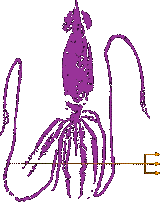


Local marine tour operators told WalesOnline
The behavior is a mystery, according to octopus experts.
"It's possible they are unusually abundant this year," Scheel wrote in an email to Live Science.
In scenes reminiscent of Finding Nemo, Inky - a common New Zealand octopus
Staff believe that in the middle of the night, while the aquarium was deserted,
Rob Yarrell, national manager of the National Aquarium of New Zealand in Napier, said:
16 Sept 2011
Wednesday 7 March 2007
Sunday 22 May 2005
Friday 4 April 2003
Friday 21 December 2001
Though no giant squid were spotted, Roper's search did set a record for depth reached by a manned submersible in New Zealand waters (2,200 feet), and he acquired astounding photographs and video footage of some other bizarre deep-sea denizens of squidville, including the elusive sea bottom hoki and the dinosaurlike prickly dogfish.
A gentle beast
Giant squid have turned up as monsters-du-jour in a number of movies, and a 100-foot-long one was featured in Peter Benchley's "Beast," though it failed to have the scare power of the great white shark in "Jaws."
Roper and most of the team worked from a surface mother ship called the Kaharoa, commanding a one-man submersible bristling with cameras called the Deep Rover, which worked the inky dark ocean depths 2,000 feet below.
Battle of the Titans7 March 2021
Meet the most sophisticated octopus in the world | Brut...
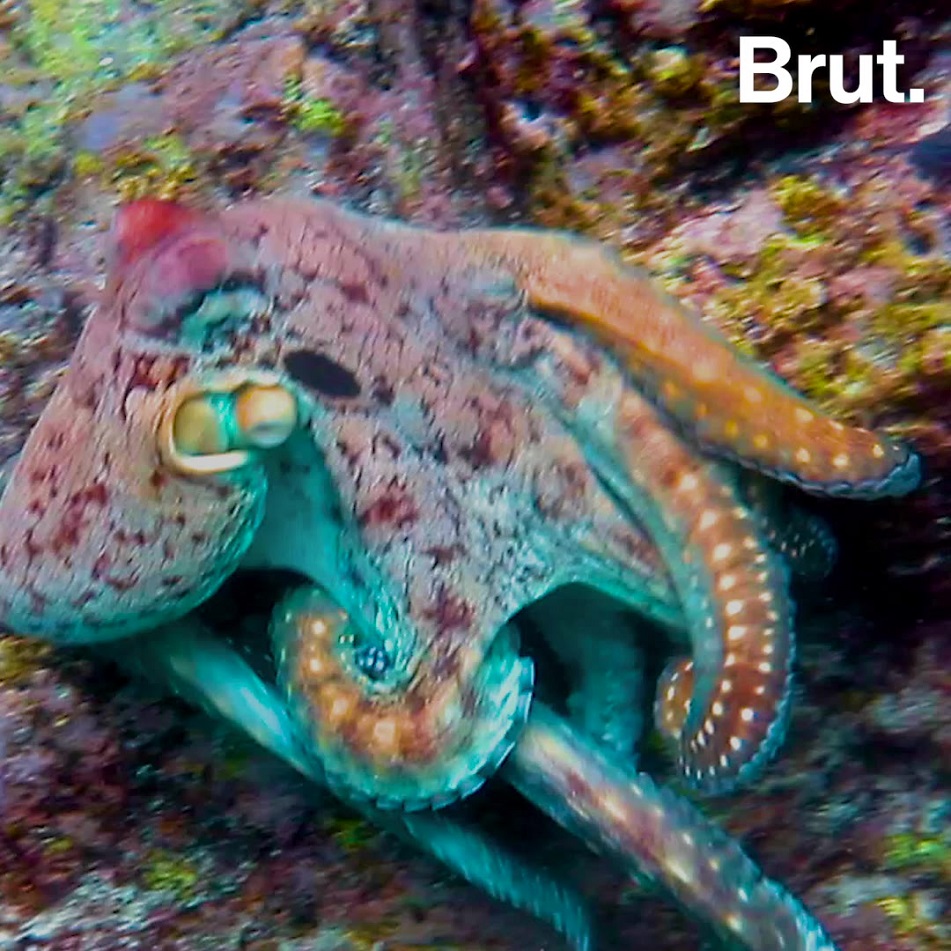
10 Aug 2020
Octopus with a Heart. Caribbean Reef Octopus
Night Dive ELLEN MULLER Photo
27 Oct June 2017
Spooky happenings were afoot last weekend in Wales … or should that be an "arm"
— or eight?
According to local news reports, bunches of octopuses were
seen oozing along the beach on
Friday night 27 Oct 2017
they saw about 20 of the cephalopods
crawling along the sand around 10 p.m.
local time Friday,
with additional reports of walking octopuses on Thursday night.
Video shows the hand-size,
pinkish mollusks creeping along the sand.
This area of the United Kingdom has seen large numbers of cephalopods this year,
said David Scheel, a marine biologist at Alaska Pacific University in Anchorage.
"Or perhaps sea conditions were atypical — a big storm or an unusually low tide?
Really nice crabs just above the low tide line?
Too warm or cold?
Recent pollution event or enrichment? Recent food die-off? A marathon walk for a compelling cause?"
[8 Crazy Facts About Octopuses - Live Science]
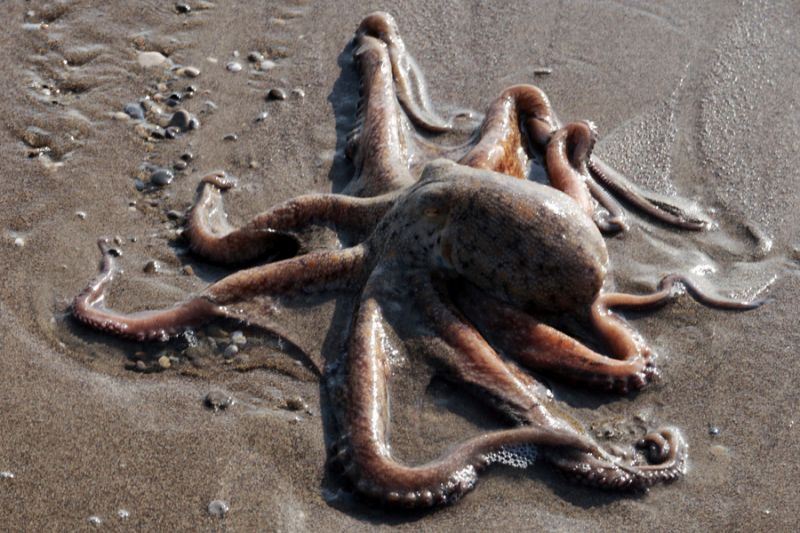
18 June 2016
Octopuses Are Aliens
With Weird DNA And Superpower Capabilities10 May 2016

This rare Dumbo octopus uses its ‘ears’ to swim around5 April 2016
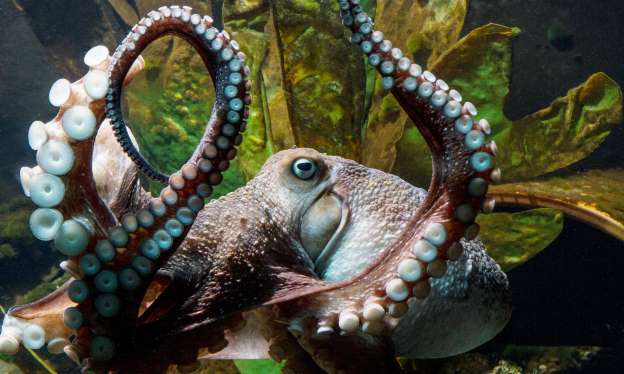
An octopus has made a brazen escape from the national aquarium in New Zealand
by breaking out of its tank, slithering down a 50m drain pipe and disappearing into the sea.
- made his dash to freedom after the lid of his tank was accidentally left slightly ajar.
Inky clambered to the top of his cage, down the side of the tank and travelled across the floor of the aquarium.
“Octopuses are famous escape artists.”5 March 2016
Scientists: Possible new octopus species found near Hawaii
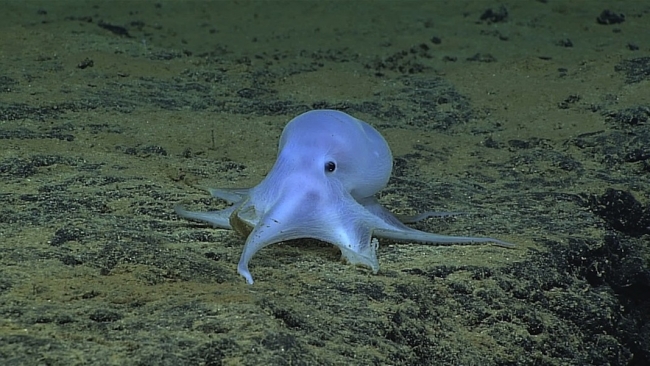
19 Sept 2015
When octopuses dance beak to beak
The larger Pacific striped octopus does
mating, motherhood and hunting like nobody else.
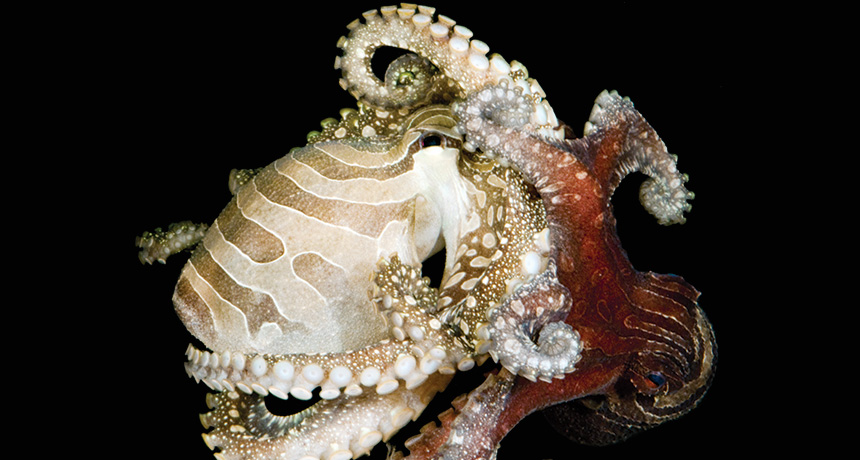
19 April 2015
For four years and five months,
she clung to the rock and guarded her eggs.
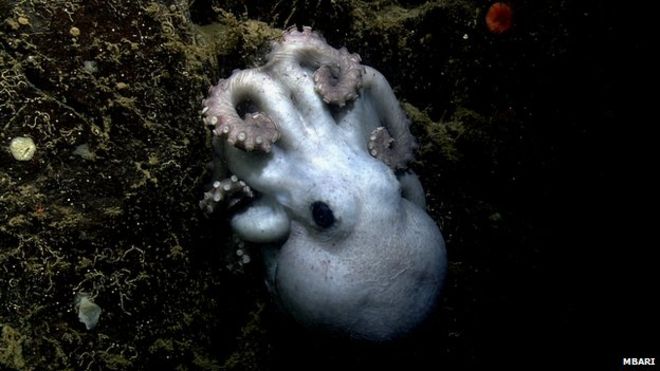
2 September 2014
Color-changing clothing may be the future of camouflage
Octopus skin as their inspiration
6 March 2014
Blue Coconut Octopus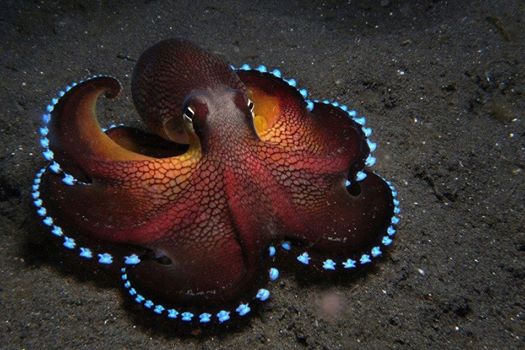
6 June 2012
13 Foot Squid Found
29 Oct 2011
Underwater Pumpkin carving contest WINNER
Perdido Key Marina Pensacola, FL
LOVE WITH EIGHT ARMS
19 April 2008
Squid's 11 inch eye is largest on earth
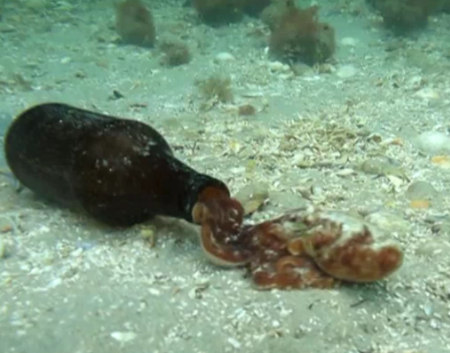
The Octopus and The Beer Bottle
Wednesday 25 July 2007
JUMBO SQUID INVADE CALIFORNIA
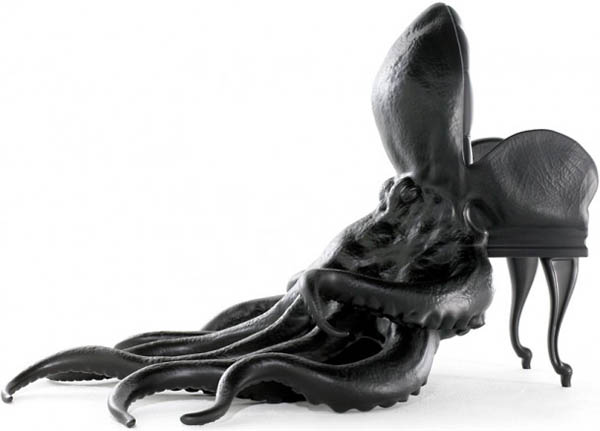
OCTOPUS CHAIR
MONSTER SQUID CATCH

THE MAGNIFICENT OCTOPUS CAKE
Foreign fleets threating Argentia's Squid Fishery
Friday 25 March 2005
These Octopus arms are made for walking
Friday 18 February 2005
MIMIC OCTOPUS:
Will We Love them to Death ?
Wednesday 7 December 2004
Octopus doesn't give up on motherhood
Saturday 16 October 2004
FLYING SQUID FOUND FOR THE FIRST TIME IN FAR NORTH
JUMBO CATCH A STUNNER
COLOSSAL SQUID ONLY THE SECOND ONE CAUGHT
NEW SQUID ON THE BLOCK
Search for a sea monster
WASHINGTON - Just as Herman Melville's fictional Capt. Ahab searched the seas for the mythic great white whale called Moby Dick, real-life New Hampshire lobsterman turned Smithsonian Institution marine biologist
Clyde Roper has been impelled by a similar dream.
He wants to look a living giant squid in the eye.
"The eye is as large as the human head," he said. "It's the largest eye in the animal kingdom."
Roper returned recently from a three-month expedition to the deep seas surrounding New Zealand, having hoped to become the first human to look upon a living giant squid.
Unfortunately, though every calculation indicated a find was likely, the underwater search failed to turn up any of the fearsome creatures, which are estimated to grow up to 60 feet in length and as much as 2,000 pounds. (The squid's two long main arms are not counted in measuring a giant squid's overall size, as they tend to stretch like bungee cords.)
The beast has inspired many of the sea monster legends of yore, which Roper would like to dispel with hard scientific fact. The giant squid, he says, is just like the squid we enjoy on dinner plates as calamari - only several yards larger.
Somewhat smaller versions of the beast have turned up dead on beaches or in fishing nets for centuries, and Roper is convinced that someday he will locate a live one.



Though no one has ever reported an encounter with a live giant squid, whether in its habitat near the ocean bottom or meandering nearer the surface, various fishing craft pulled up no fewer than six slightly undersize giant squid last year.
These squid were, unfortunately, dead. Roper, an expert on cephalopods (as squid are more properly known) at the Smithsonian's National Museum of Natural History since 1966, needs to find a live one to answer some burning scientific questions:
How long do giant squid live? What do they eat? How deep can they survive, how big do they get, how fast can they swim? How do they fertilize their eggs and how many species of them are there?
All this, he says, requires observation of the creatures and their daily lives firsthand, which has prompted another question Roper wants answered: Why can whales catch them when scientists can't?
Even more gigantic, the sperm whale is the giant squid's principal predator, and giant squid beaks, tentacles and other body parts have turned up in sperm whale stomachs.



"I suspect it (the giant squid) is probably a pretty gentle beast," said Roper. "The musculature suggests that it's sort of a slow-moving and lethargic animal. It doesn't need to be a powerful, fast-swimming animal, just because of its size."
Weighing 600 pounds at a minimum, it's the largest invertebrate on the planet.
"It's outgrown any potential predator that could exist in the habitats where it occurs - with the single exception of the sperm whale," Roper said. "But when you look at the size of its beaks, the fact that its arms and tentacles are covered with big suction cups five centimeters across, then its size seems of monstrous proportions."
Still, the giant squid is no reason to avoid the water.
"It doesn't have a monstrous attitude," Roper said. "We don't know of any human being eaten by a squid."
It's taken a while for humans to accept that fact. In the 16th century, when a few giant squid washed up on the shore of Norway, locals began spreading tales of monstrous "mermen" coming out of the sea - tales that held currency all the way up to 1854, when a Danish professor and squid scholar named Japetus Steenstrup concluded that the monsters were really just big squid.
Nevertheless, seven years later author
Jules Verne made a truly gigantic squid the nemesis of his underwater hero Capt. Nemo in his best-selling "20,000 Leagues Under the Sea."
Verne was inspired by a real-life encounter earlier that year between a French ship and a squid merely 25 feet in length, which the nervous crew shot full of cannon balls.



`A nest of anacondas'
Even the crew of Melville's whale-hunting ship Pequod spotted "a vast pulpy mass . . . long arms radiating from its center and curling and twisting like a nest of anacondas."
Part of the drive for Roper's quest comes purely from the fact that the animal exists.
"It's out there, isn't it?" Roper said. "It's out there. We know the giant squid is a real, living organism."
But he'd also like to dispel the myth and hyperbole and replace it with scientific fact.
"For years I thought, Why don't we try to learn the truth about this animal, rather than perpetuate myths?" he said. "No matter what I've worked on in my life as a biologist, I've found that the truth about these organisms is far, far more interesting than any fiction that can be made up about them. I view the giant squid as an icon - an icon of the last frontier on earth, the deep sea."
Backed by Discovery Communications, which plans a Discovery Channel movie about Roper's quest next year, Roper formed a research team that included experts from NASA, New Zealand's Institute of Water and Atmospheric Research, Cornell University and Whale Watch Kaikoura.
Arriving on New Zealand's South Island in February in time to examine a smaller giant squid that had been hauled up by fishermen and placed in a large freezer, the team then began operations into the Kaikoura undersea canyon.



Because the waters there are teeming with marine organisms, the Deep Rover's lights were able to penetrate only a few yards. Giant squid might have been lurking just beyond, but in all their weeks at sea the only ones the team encountered were much more diminutive.
Still, they made for much excitement.
Another shrimp dinner
"As we ascended into the rich biological soup of the near-surface waters, we began to see lots of squid that were attracted to the bright lights of the sub," Roper wrote in a report early in the expedition.
"Soon dozens of the juvenile New Zealand arrow squid were dashing and jetting in a frenzy in and out of our lights. They were feeding on the little euphausid shrimps that also were beckoned into the light. What a sight! Each little torpedo of a squid would zip at lightning speed, curl back its arm tips, shoot out its tentacles and - zap! - another shrimp dinner."
That Roper doesn't seem to fear encountering a giant squid out for - zap! - a Smithsonian-scientist dinner speaks well for the sang-froid of academe these days. But then, being so elusive, the giant squid probably hasn't developed much of a taste for biologists.
One question that has been answered is, what do giant squid eat? The answer would warm the heart of Dr. Hannibal Lecter.
"We have evidence they feed on deep-sea fishes on the bottom," said Roper. "Orange roughy has not been confirmed, but hoki, rattails, grenadiers, animals like that. Also, other kinds of squid. Many species of squid. The giant squid knows what to eat. It obviously enjoys a calamari dinner every once in a while."
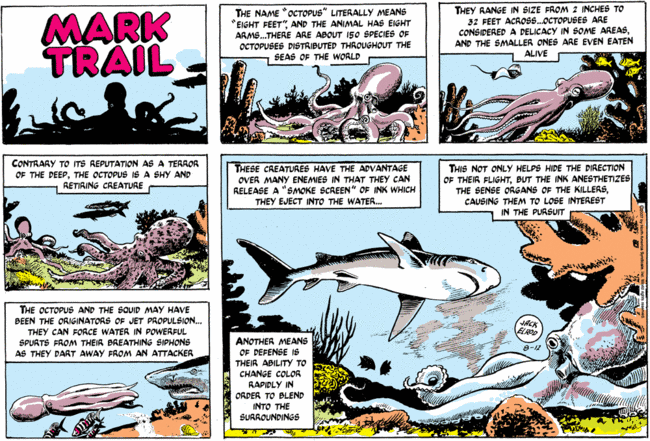




By Richard Ellis
What happens when a sperm whale clashes with a
giant squid in the depths of the sea?




